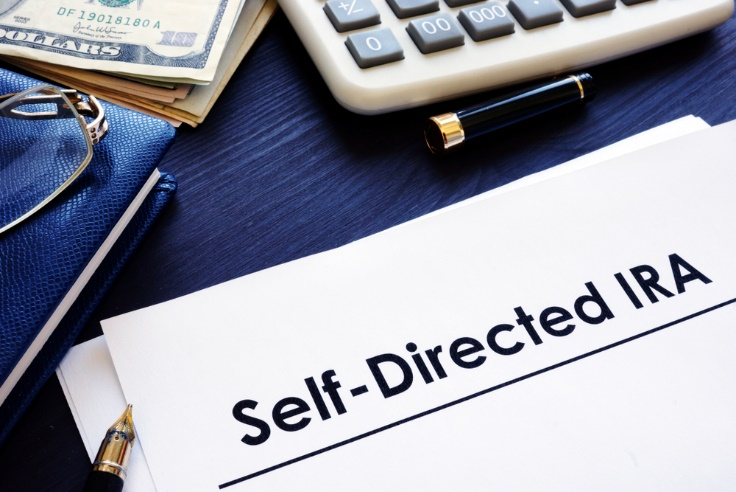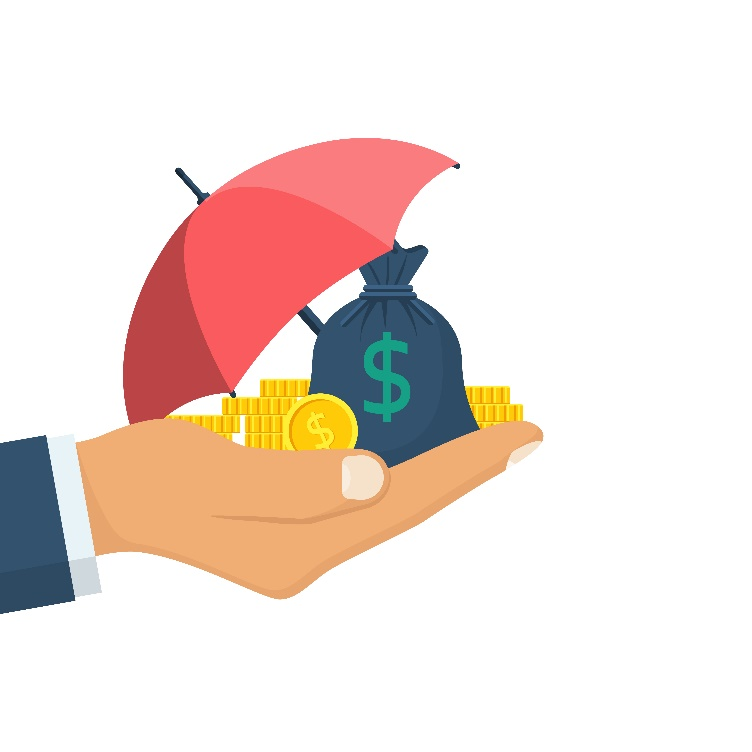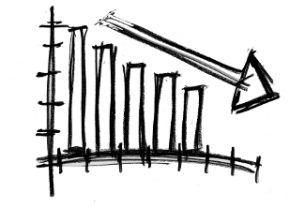During times of political and economic uncertainty, investors flock to the safe haven of gold. Gold, unlike any other asset, has stood the test of time. It maintains its value day in and day out, oblivious to the goings-on of the world around it.
Many investors trust gold as a hedge against difficult economic times and seek to hold a portion of their portfolio in gold. Whether it’s buying a handful of gold coins to use as currency in a natural disaster or survival situation, or buying gold through a gold IRA to diversify a retirement portfolio, gold continues to be the number one asset investors trust to protect their assets.
Paper assets may rise and fall in value, even becoming worthless when the companies that issue them go bankrupt, but no one ever went bankrupt investing in gold. Its tangible nature and universal demand make it a natural choice for investors.
As much as central banks love to deride gold as a barbarous relic and as much as they downplay its importance to the world economy (even while they buy tonnes and tonnes of gold each year), gold is really the only risk-free asset in existence. When you own an ounce of gold, you own an ounce of gold. That gold is an asset, it isn’t someone else’s debt, or a claim to a partial ownership of a company. That gold is yours exclusively, and no one else’s.
Gold also appreciates in value over time because its supply is relatively limited. Gold mining is capital intensive, so annual mining totals don’t add significantly to the overall gold supply. With an increasing population and growing demand, that leads to each ounce of gold continuing to gain in value.
As the asset of first resort for investors in the event of financial crises, gold maintains its value throughout economic turbulence. Those investors who understood the importance of gold during the 2008 financial crisis benefited from holding it in their portfolios. Many who didn’t buy gold back then learned from their mistakes, and are investing in gold coins, gold bars, and gold IRAs today to ensure that their assets remain protected in the coming months. If you are interested in learning more about how to invest in gold, continue reading this gold IRA guide.
What Is a Gold IRA?
To begin the gold IRA guide, let’s begin by discussing how a gold IRA differs from a traditional IRA, and a few reasons you should consider starting a gold IRA. A gold IRA operates differently from a traditional IRA in that it allows investors to invest their IRA assets in physical gold coins or bullion. Rather than investing in paper assets such as stocks and bonds, or paper claims to gold funds such as shares in a gold ETF, a gold IRA actually holds physical gold that you can touch. That allows investors to benefit from the same tax advantages of traditional IRAs while still benefiting from the protective status of gold.
Investing in a gold IRA offers numerous advantages to investors. These include diversifying their portfolios, providing a hedge against inflationary monetary policy and devaluation of the dollar, and offering better growth rates over the long term than stock markets.
Gold’s portfolio diversification allows investors to lessen the risk exposure of their retirement accounts. Investing too heavily in stocks and bonds leaves investors subject to the ups and downs of Wall Street. By investing in gold, investors can hold an asset that still performs even when stocks and bonds don’t.
Gold also protects against inflation, as it maintains its value over time. While an ounce of gold still buys just as much in terms of real goods as it did at the beginning of the 20th century, the dollar has lost 96% of its value since then. An investor who had held a $20 gold coin since that time would see that coin worth over $1,500 today, whereas an investor who had held a $20 bank account balance since that time would see it worth just $20 today.
Finally, gold as a long-term investment asset provides better growth opportunity than stock markets. Since the closing of the gold window in 1971, gold has grown in value at an annualized average of 7.7%. Compare that to the 7.3% annualized growth average of the Dow Jones and the S&P 500. And gold’s performance over the past 20 years is even better, with nearly double the growth rate of stock markets.
Using a Self-Directed IRA to Invest in Gold
Gold IRAs are a form of self-directed IRA, in which investors themselves are fiduciaries and are responsible for choosing their investments. That requires a little bit of knowledge of the IRA process, particularly when funding a gold IRA through a gold IRA rollover. It isn’t too difficult, but you’ll want to consult with tax advisers to make sure that you don’t accidentally incur any tax liabilities.
Setting up a gold IRA will require a new IRA account to be set up that will house your gold assets. In order to fund that new IRA account, you can roll over funds from an existing 401(k), IRA, or similar retirement account. Those rollovers can be done tax-free by transferring those funds directly between accounts.
Self-directed IRAs allow investors to invest in a wide array of assets, but the most popular by far are gold, silver, and other precious metals. You’ll also have to arrange for storage of your gold coins and bullion, as you can’t hold them yourself. But there are numerous IRS-certified custodians who have experience helping gold IRA owners safeguard their gold assets.
Custodians will manage and monitor your assets and keep them stored safely and securely against theft. Many custodians can also help you store other non-traditional assets aside from just gold.
If you already have an IRA, you can ask your current IRA custodian if they’re able to help you invest in gold. Likely they won’t be able to, which is where companies like Goldco can help you. The gold IRA experts at Goldco can walk you through the process of setting up a gold IRA, selecting a gold IRA custodian, and making your first gold IRA investments.
Transferring Funds Into a Self-Directed IRA Account
The process of funding a gold IRA is made much easier if you already have retirement assets ready to roll over. The gold IRA rollover process can be quick and simple. Funds from a 401(k), 403(b), TSP, or other retirement account can be rolled over into a gold IRA tax-free.
The Process of Investing in Gold
Once you have a gold IRA set up and have secured your source of funding and funded your gold IRA, you’re ready to start investing in gold. But your gold IRA can’t just invest in any gold. Jewelry, collectible coins, and gold below a minimum fineness is ineligible. The experts at Goldco can help you choose the right gold coins or bullion to buy so that your gold IRA investments don’t run afoul of IRS regulations.
Many people think that the process of investing in gold through an IRA is long and complicated, but that couldn’t be any further from the truth. In fact, the process of gold delivery is probably the longest step of the process, but that would be the same whether you invest in gold through an IRA or just buy coins from an online metal broker. With an experienced custodian and a reliable gold dealer, your gold IRA can be up and running very quickly.
To conclude our gold IRA guide, here are four easy steps to follow when investing in a gold IRA.
1. Open a Self-Directed IRA

The first step in investing in gold is to open a self-directed IRA. Self-directed IRAs allow you to make alternative investments for retirement, including investing in real estate, precious metals, and cryptocurrency. Once you have made the decision to open the IRA, apply to open a gold IRA and, if approved, your account will be active within a few business days.
2. Fund Your New Gold IRA

Once your gold IRA account has been activated, you need to fund it. If you’re doing a gold IRA rollover, you should contact your existing IRA custodian to initiate the process. This is one of the largest variables in the process of funding a gold IRA, as your current custodian may have a convoluted and lengthy process before a rollover can take place.
The lengthy process is meant to protect you, to ensure that it is really you requesting your money, and not a fraudster. Once you’ve informed your current custodian of your decision to engage in a gold IRA rollover, and they are ready to release the funds, they then can transfer the funds to your new gold IRA custodian. Because this process can take anywhere from a few days to a few weeks on your current custodian’s end, you’ll want to plan ahead.
3. Select a Gold IRA Custodian

Once you’ve selected a custodian for your new gold IRA, that custodian can receive funds from your current custodian. Part of the custodian selection process includes selecting a depository for your funds. There are numerous depositories around the country that are experienced in storing gold, silver, and precious metals for both commercial and individual investors.
4. Start Investing in Gold

Once your new custodian receives funds from your current custodian, you can start deciding which gold coins, bars, or other bullion you want to invest in. You can invest in solid stalwarts like American Gold Eagles, limited edition mintages from Canada and China, or gold bars and rounds from mints around the world. With hundreds of options for you to choose from, there’s something out there for every investor.
Investing in a gold IRA can seem daunting at first if you’re unfamiliar with the process. But with the right partner the process can be quick and simple. If you want to take advantage of the many benefits of investing in a gold IRA, don’t waste any more time. Call the experts at Goldco today to start the process of setting up your gold IRA.
Goldco’s experts can help make the gold IRA rollover process a smooth and easy one, allowing you to diversify your portfolio, hedge against inflation, and keep growing your retirement assets into retirement. Don’t let a market crash decimate your retirement savings – start investing in gold today. If you found this brief gold IRA guide useful, fill out the form on our home page to receive an Exclusive Self-Directed 12 Page Gold IRA Guide.
This article was originally posted on Goldco.



